BIOL 3301 Daane/Lin Exam 1 Notes
1/129
There's no tags or description
Looks like no tags are added yet.
Name | Mastery | Learn | Test | Matching | Spaced |
|---|
No study sessions yet.
130 Terms
Pangenesis Theory
Early concept of heredity proposing that particles ("seeds") carry genetic information from different parts of the body to the reproductive organs.
Blending Hypothesis
the idea that genetic material from the two parents blends together.
Mendel's experiments with garden peas refute this idea.
Gregor Mendel
Augustinian monk and botanist whose experiments in breeding garden peas led to his eventual recognition as founder of the science of genetics (1822-1884)
* Ignored for 34 years, the title of work did not capture the importance of the work
* Lack of understanding of chromosome transmission
Pea Plant 7 Types
1. Seed form
2. Seed color
3. Pod form
4. Pod color
5. Flower color
6. Flower position
7. Stem length
Why the garden pea (Pisum sativum)?
* traits are true-breeding -invariant generation
* 4 of 7 traits studied fall on separate chromosomes
Characters
observable characteristics of an organism (ex. eye color)
Trait/Variant
specific properties of a character (ex. blue eyes)
Parent generation (P or P1)
the two plant selected to cross for a breeding experiment.
First generation (F1)
self pollinate each line
Second generation (F2)
assess traits in 2nd generation
genes
DNA segments that serve as the key functional units in hereditary transmission.
law of segregation
Mendel's law that states that the pairs of homologous chromosomes separate in meiosis so that only one chromosome from each pair is present in each gamete
homozygous
having two identical alleles for a trait AA
heterozygous
having two different alleles for a trait Aa
genotype
An organism's genetic makeup, or allele combinations.
phenotype
physical characteristics of an organism
law of independent assortment
each allele is separately and randomly passed to the next generation
- plant with genotype Tt can pass either T or t (but not both) to the next generation
RrYy x RrYy
9:3:3:1
probability
probability = number of times an event occurs / total number of events
probability that 2 independent events will occur
equal to the sum of their probabilites
ex. probability of getting tails 3 times?
1/5 1/5 1/5
degrees of freedom
n-1
a ____ is a variation of a gene
allele
chromosomes
structures that carry the genetic information
- composed of: DNA, proteins
chromatin
DNA-protein complex
haploid
(genetics) an organism or cell having only one complete set of chromosomes
diploid
containing two complete sets of chromosomes, one from each parent.
locus
Location of a gene on a chromosome
mitosis
cell division in which the nucleus divides into nuclei containing the same number of chromosomes
s phase
prior to mitosos
- chromosomes replicated
- duplicated chromosomes form a pair called sister chromatids, joined at a centromere
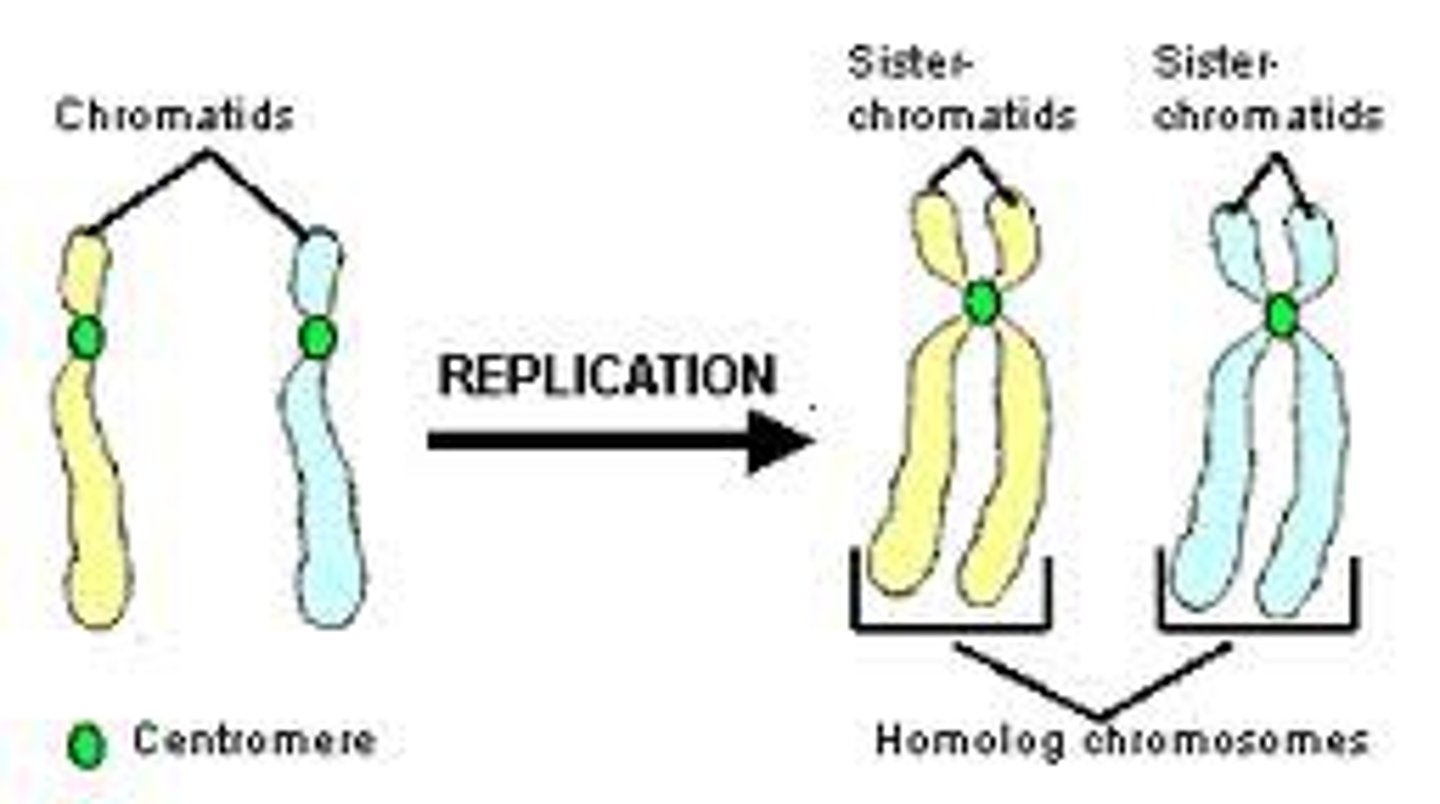
Interphase
Cell grows, performs its normal functions, and prepares for division; consists of G1, S, and G2 phases
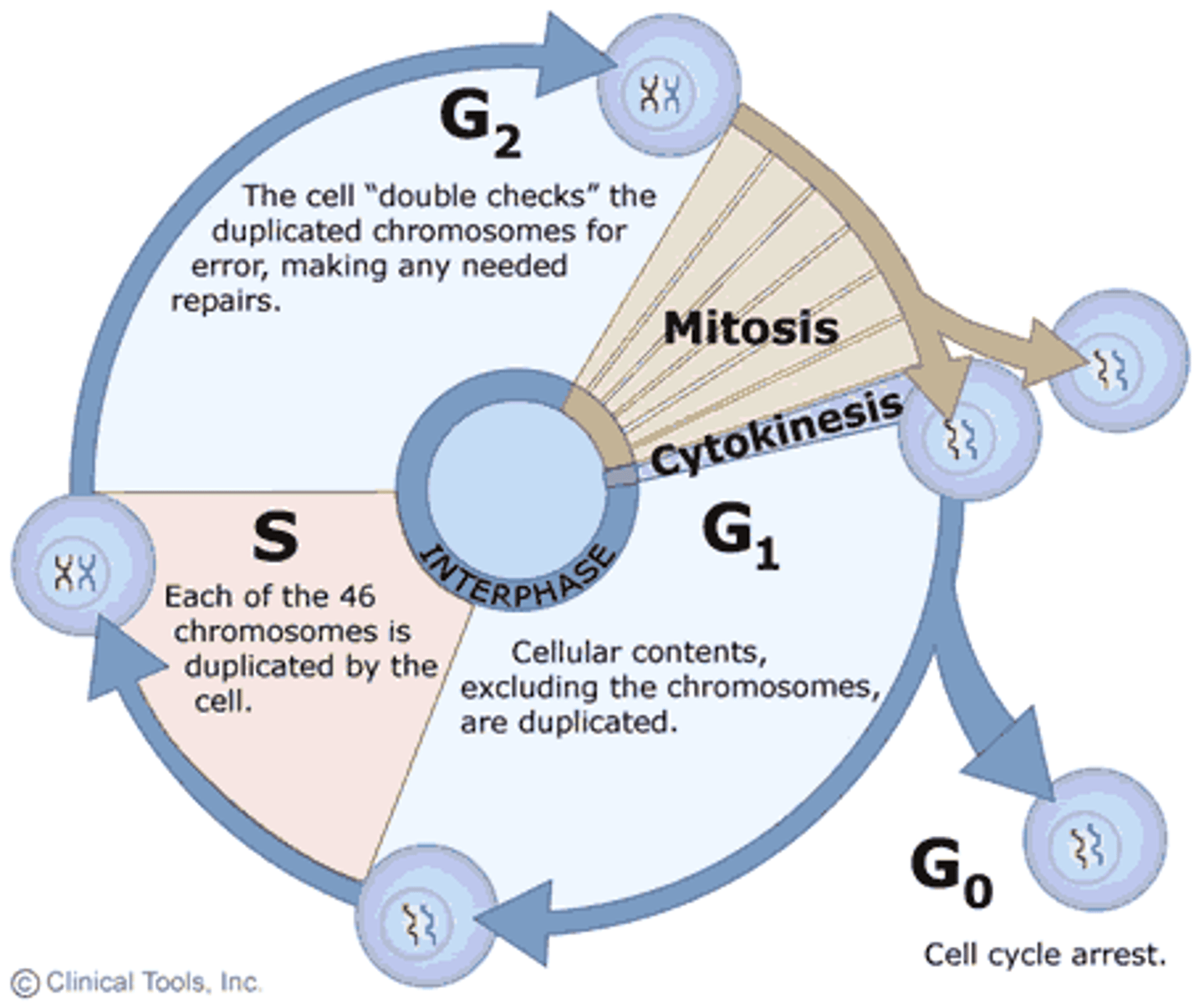
G0
resting phase
Prophase
nuclear envelope dissociates into small vesicles
- chromosomes begin to separate
chromatids condense
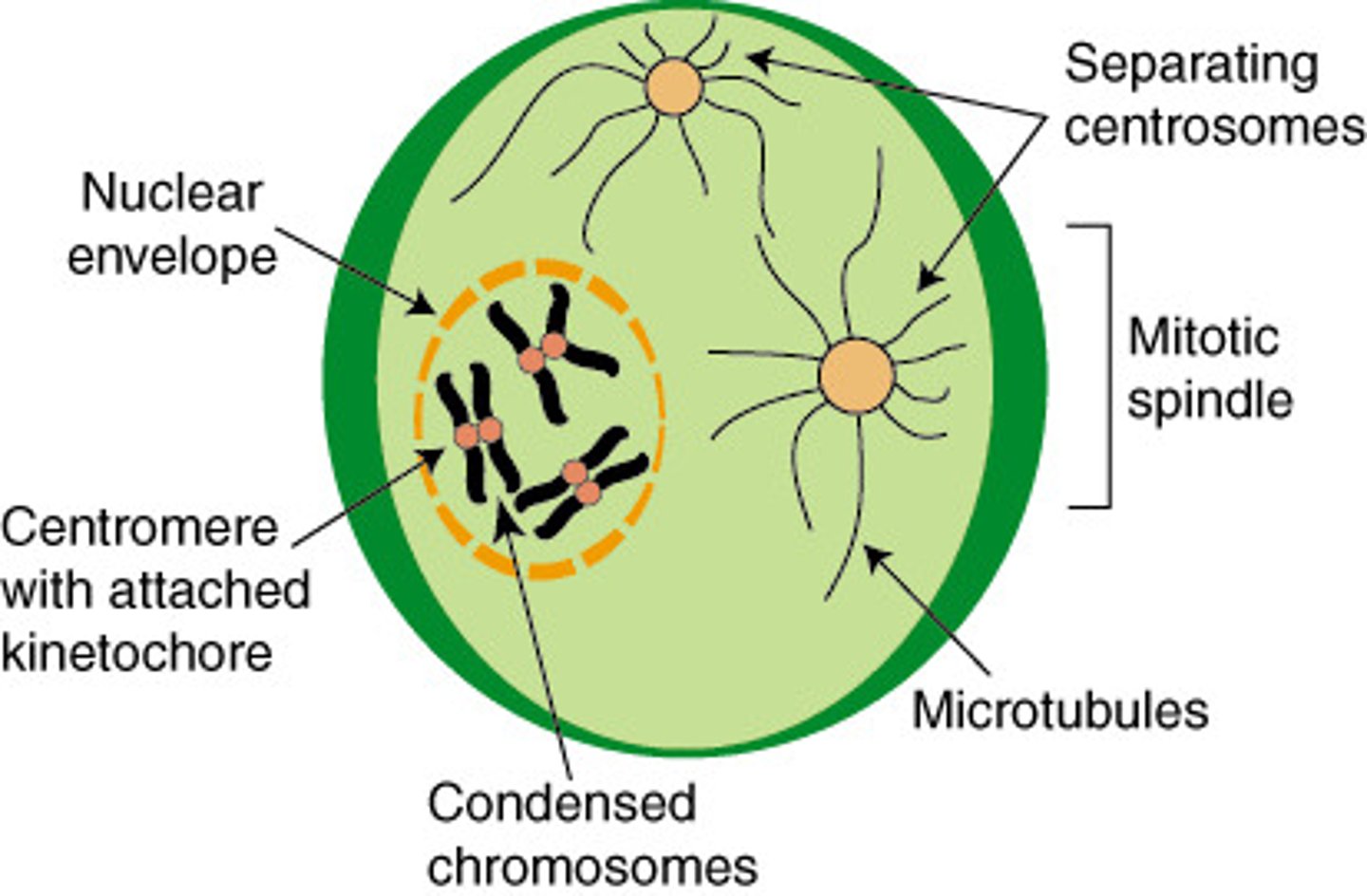
prometaphase
centrosomes move to opposite ends of the cell emitting microtubules
- spindle fibers interact w/ sister chromatids; spindle apparatus forms
- two kinetochores on a pair of sister chromatids are attached to kinetochore MT on opposite poles
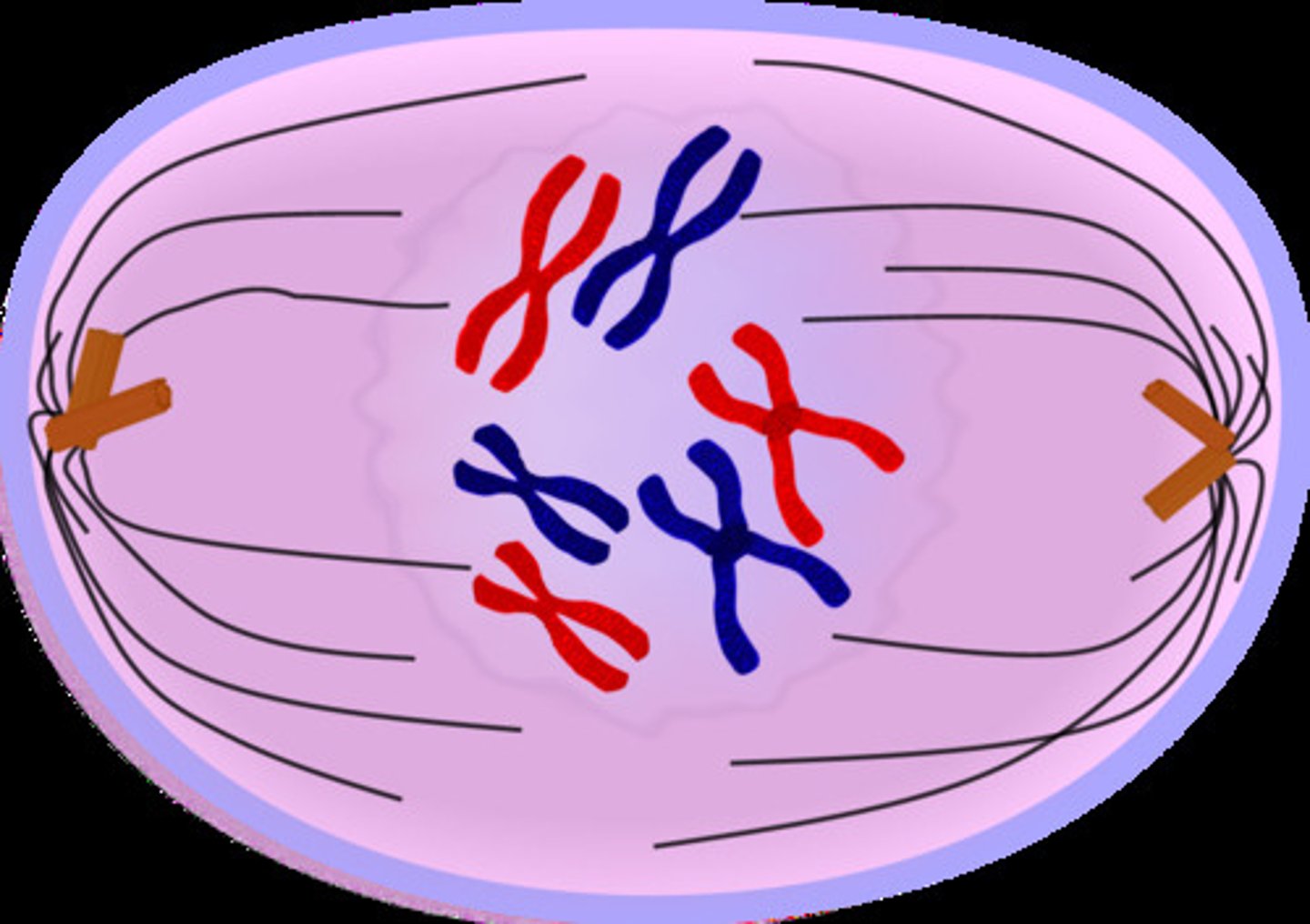
aster microtubules
important for positioning of the spindle apparatus
polar microtubules
help tp push the poles away from each other
kinetochore microtubules
attach to the kinetochore, which is bound to the centromere of each individual chromosome
metaphase
Chromosomes line up in the middle of the cell, called metaphase plate
each pair of chromatids (dyad) attached to both poles by kinetochore microtubules
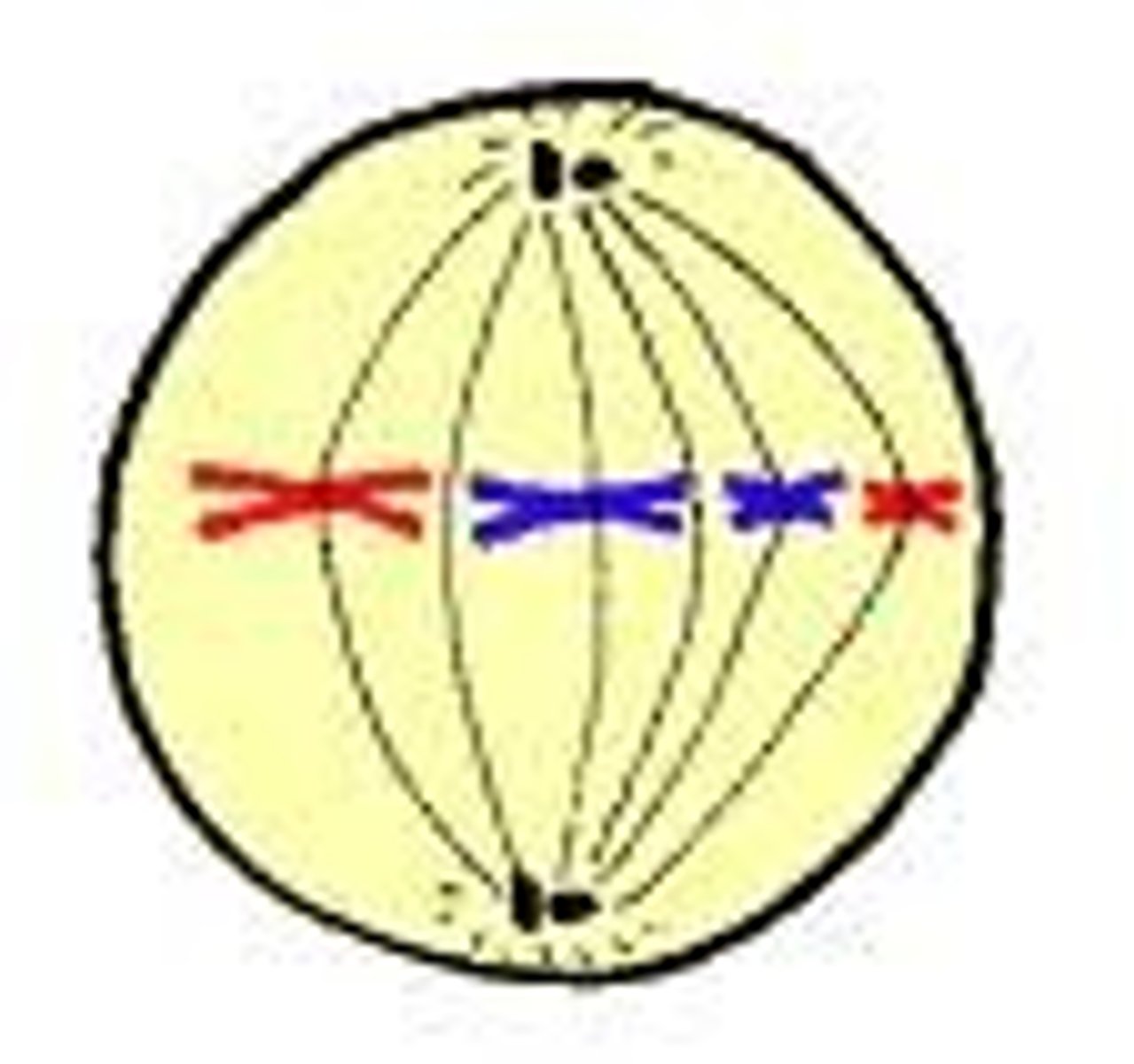
anaphase
sister chromatids separate to a separate pole
kinetochore MTs shorten, polar MTs lengthen
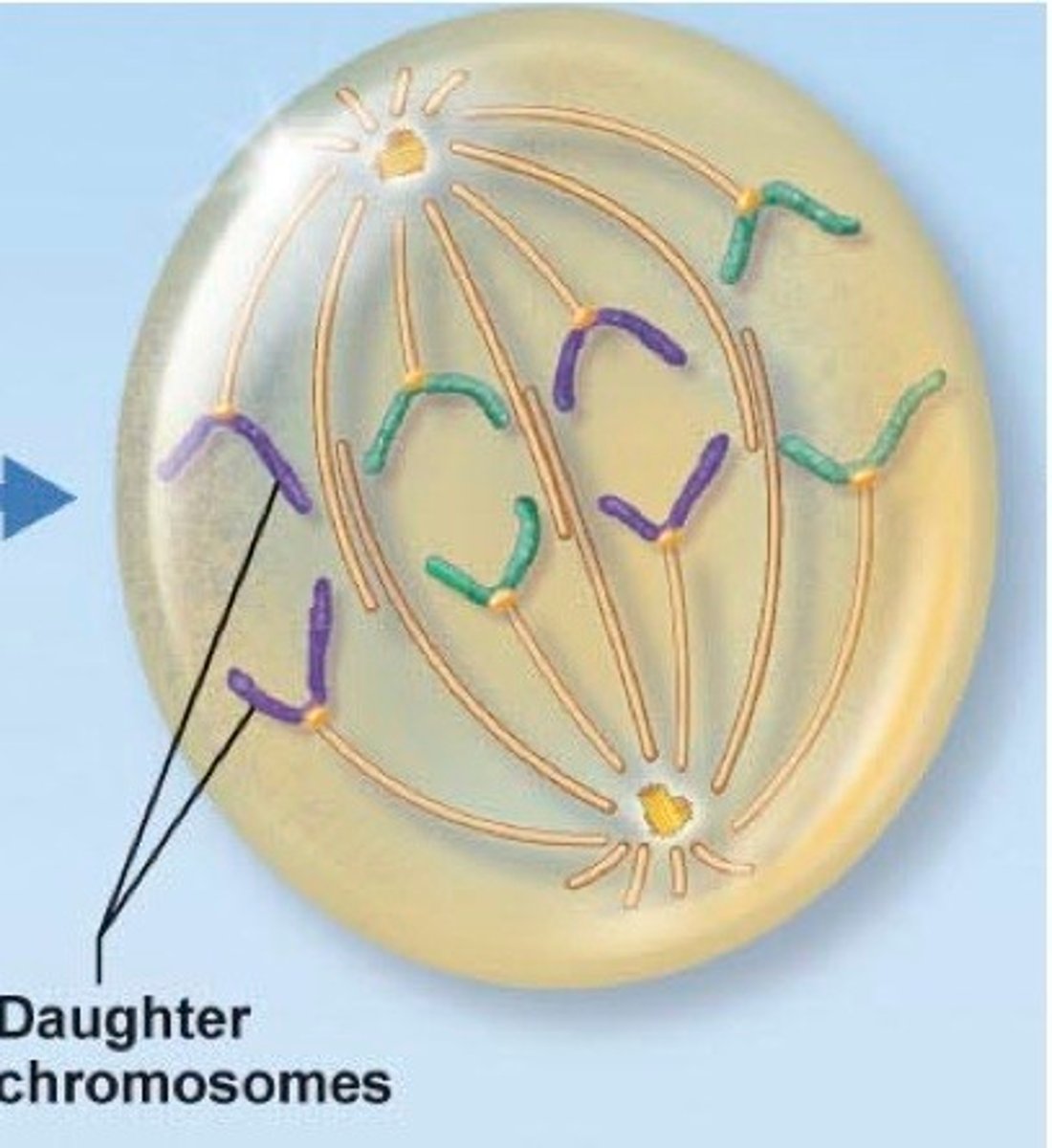
telophase
chromosomes reach their poles and decondence
- nuclear membrane reforms to form two separate nuclei
cytokinesis
Division of the cytoplasm during cell division, cleavage furrow

meiosis
produces germ cells w/ only one set of chromosomes (haploid)
Meiosis I - Prophase I key events
The nuclear membrane dissolves.
Chromatin tightly coils up.
Homologous chromosomes, each composed of two sister chromatids, come together in pairs in a process called synapsis.
During synapsis, chromatids of homologous chromosomes exchange segments in a process called crossing over.
The chromosome tetrads move toward the center of the cell.
synapsis
the fusion of chromosome pairs at the start of meiosis.
crossing over, recombination
meiosis II: cell division
each daughter cell from meiosis divides again but without DNA replication, results in cells that are haploid
germ cells
haploid cells that fuse together to form a new diploid organism during fertilization
heterogamous
gametes are morphologically different
spermatogenesis
Formation of sperm
Oognesis
the production or development of an ovum.
- only one cell per meiosis becomes an egg
- division in meiosis I is asymmetric producing two haploid cells of unequal size
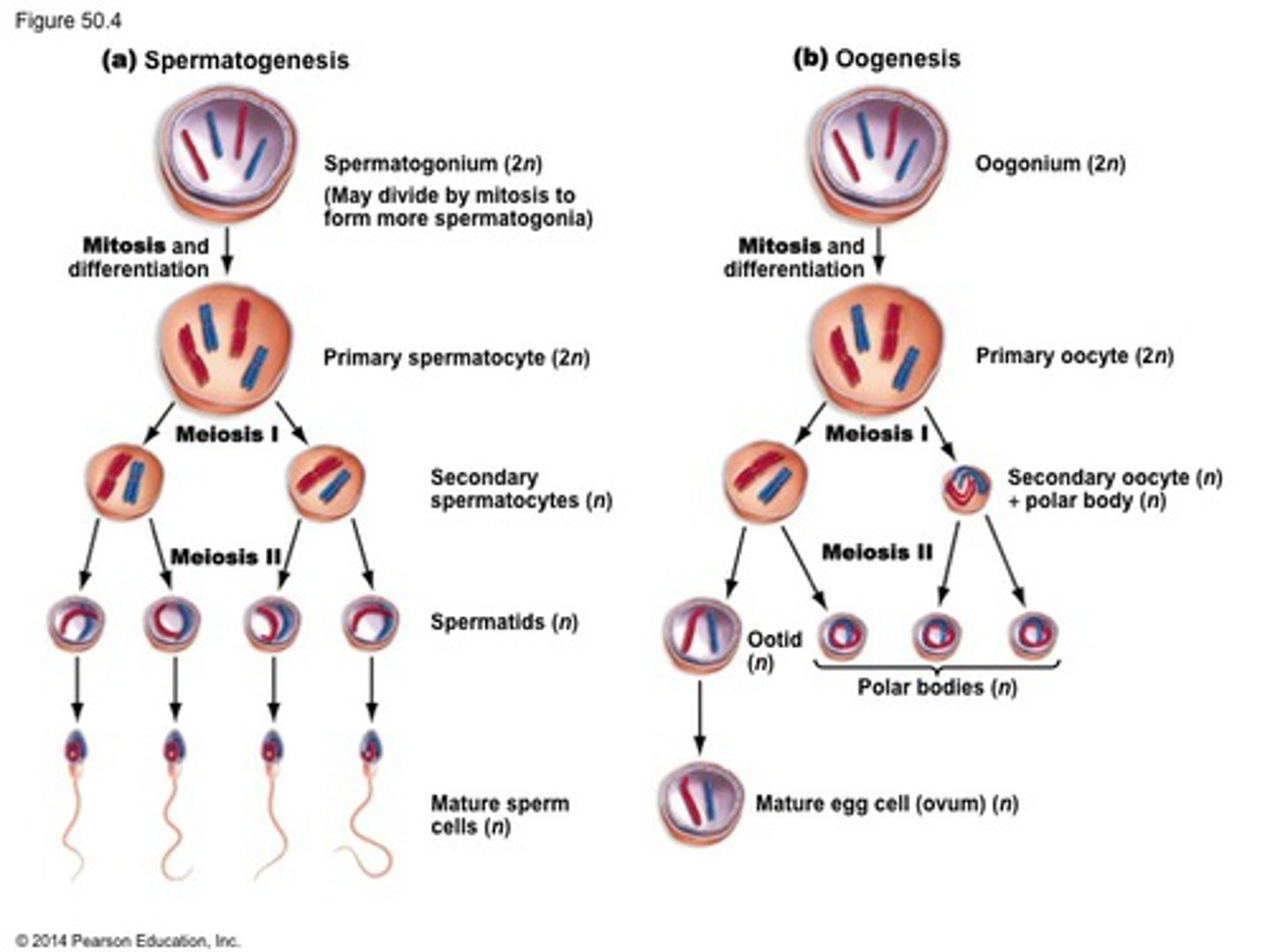
Which of the following does not occur during prophase of meiosis I?
separation of homologous chromosomes (anaphase)
the separation of homologs during meiosis explains the law of
segregation
the random alignment of homologs during meiosis explains the law of
independent assortment
monad
1 chromatid
dyad
paired sister chromatids
bivalent
paired homologous chromosomes
synapsis
pairing of homologous chromosomes during meiosis I
chiasma
site where crossing over occurs (point of physical contact between non-sister chromatids)
synaptonemal
complex that holds a DNA-protein mixture binding the chromosomes
kinetochore
attaches at centromere, a gene-poor region of a chromosome loaded w/ special nucleosomes
telomeres
ends of chromosomes, added on after DNA replication
- shrink slightly after every DNA replication
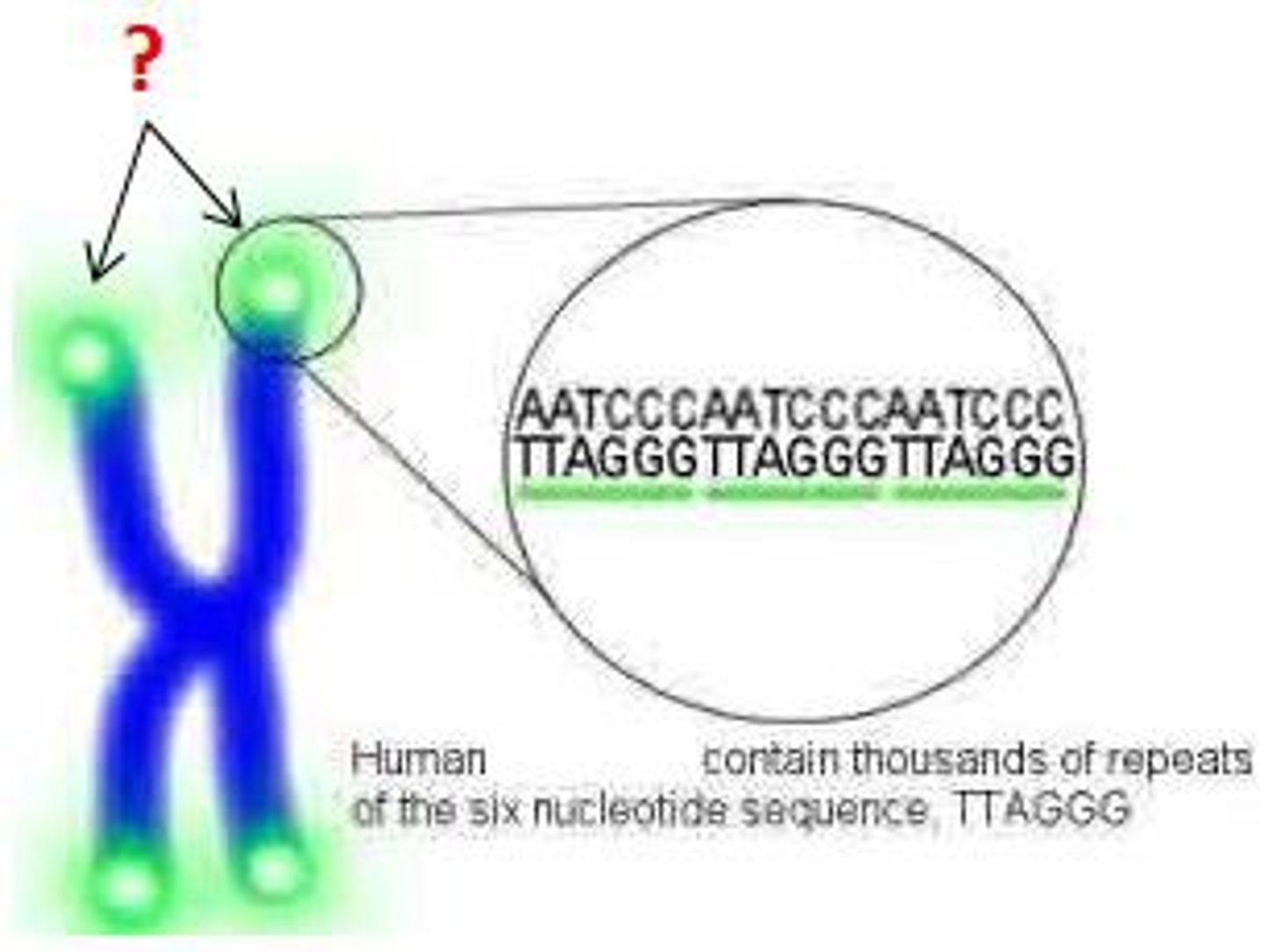
ploidy
counted by number of centromeres
Which of the following accurately reflects the relative chromosome composition at the beginning and end of meiosis II in humans?
1 N -> 1 N
Arrange the following events in the proper order in which they occur during meiosis I.
a = separation of homologous chromosomes
b = synapsis
c = crossing-over
b, c, a
simple mendellian inheritance involves
- a single gene with two different alleles
- alleles display a simple dominant/recessive relationship
wild-type alleles
prevalent alleles in a population
wild-type alleles encode proteins that
function normally and are made in proper amounts
mutant alleles
altered by mutation
mutant alleles are often defective in their ability to express a functional protein
- often inherited in a recessive fashion
- loss of function
knockout alleles
loss of function generated in the lab
Why are recessive alleles not observed in heterozygous individuals?
- 50% of normal protein is enough to accomplish protein's cellular function
- heterozygote may produce more than 50%
- normal gene "up-regulated t compensate for lack of function of defective allele
gain-of-function
protein encoded by the mutant gene is changed so it gains a new or abnormal function
dominant-negative
protein encoded by the mutant gene acts antagonistically to the normal protein
haplosufficiency
mutant is loss-of-function, but heterozygote does not make enough product to five the wild-type phenotype
incomplete penetrance
the genotype does not always produce the expected phenotype
expressivity
the degree to which a trait is expressed
ex. polydactyly influenced by environment, modifier genes
environmental effects on expressivity
- many traits vary in accordance w/ environment
- traits have a "reaction norm" of potential phenotypes
incomplete dominance
heterozygote exhibits a phenotype that is intermediate between corresponding homozygotes
ex. red x white = pink flowers
The arctic fox is primarily white in winter months, but brown in summer when it is warmer. What accounts for this phenomemon?
environmental effect
overdominance
a heterozygote has greater reproductive success compared with either of the corresponding homozygotes
"heterozygote advantage"
ex. sickle cell unaffected, malaria-resistant
explanations for overdominance
1. Disease resistance
2. Homodimer formation
3. Variation in functional activity
overdominance 1. disease resistance
microorganism will infect a cell if certain cellular proteins function optimally
- heterozygotes can have one altered copy of a gene
- not enough to cause serious side effects, but enough to prevent infections
overdominance 2. homodimer formation
many proteins function as homodimers, composed of two subunits encoded by the same type of gene

overdominance 3. functional activity
a gene, E, encodes a metabolic enzyme
Allele E1 encodes an enzyme that functions better at lower temp.
Allele E2 encodes an enzyme that functions better at higher temp.
Heterozygotes E1E2 encodes an enzyme that functions better at range of both temps.
multiple alleles
most populations have multiple allele variants at any given locus
in diploids, any individual has at most two of these alleles, but many variants present in the broader population
ex. blood type
co-dominance
both alleles are expressed and affect phenotype

blood type i
encodes a defective enzyme
blood type IA
encodes a form of the enzyme that can add the sugar N-acetylgalactosamine to the carbohydrate tree
blood type IB
encodes a form of the enzyme that can add sugar galactose to the carbohydrate tree
A male with blood type B and a woman with blood type A have a child with blood type AB. The blood type of the child is possible due to what type of inheritance pattern?
codominance
pseudoautosomal inheritance
refers to the very few genes found on both X and Y chromosomes
behave like autosomes (non sex chromosomes)
little recombination on
y chromosome
x-linked
hemizygous in males
- only one copy
- males are more likely to be affected
y-linked
relatively few genes in humans
- referred to as holandric genes
- transmitted only from father to son
lethal alleles
have the potential to cause death
- result of mutations in essential genes
- often recessive
- onle 1/3 of genes are essential
Pleiotropy
most genes affect > 1 trait
single genes causes multiple phenotypes
ex. cystic fibrosis
complementation
two affected parents have unaffected offspring due to having mutations in separate genes
epistasis
one gene masks phenotype of an allele of another gene
modifier
one gene modifies phenotype of an allele of another gene
redundancy
mutation in >= 2 genes necessary for phenotype
gene redundancy
one gene compensates for the function of another
- common w/ loss-of-function alleles (mutations that eliminate the activity of gene products)
gene knockout
loss-of-function in the lab mutation